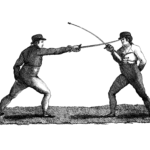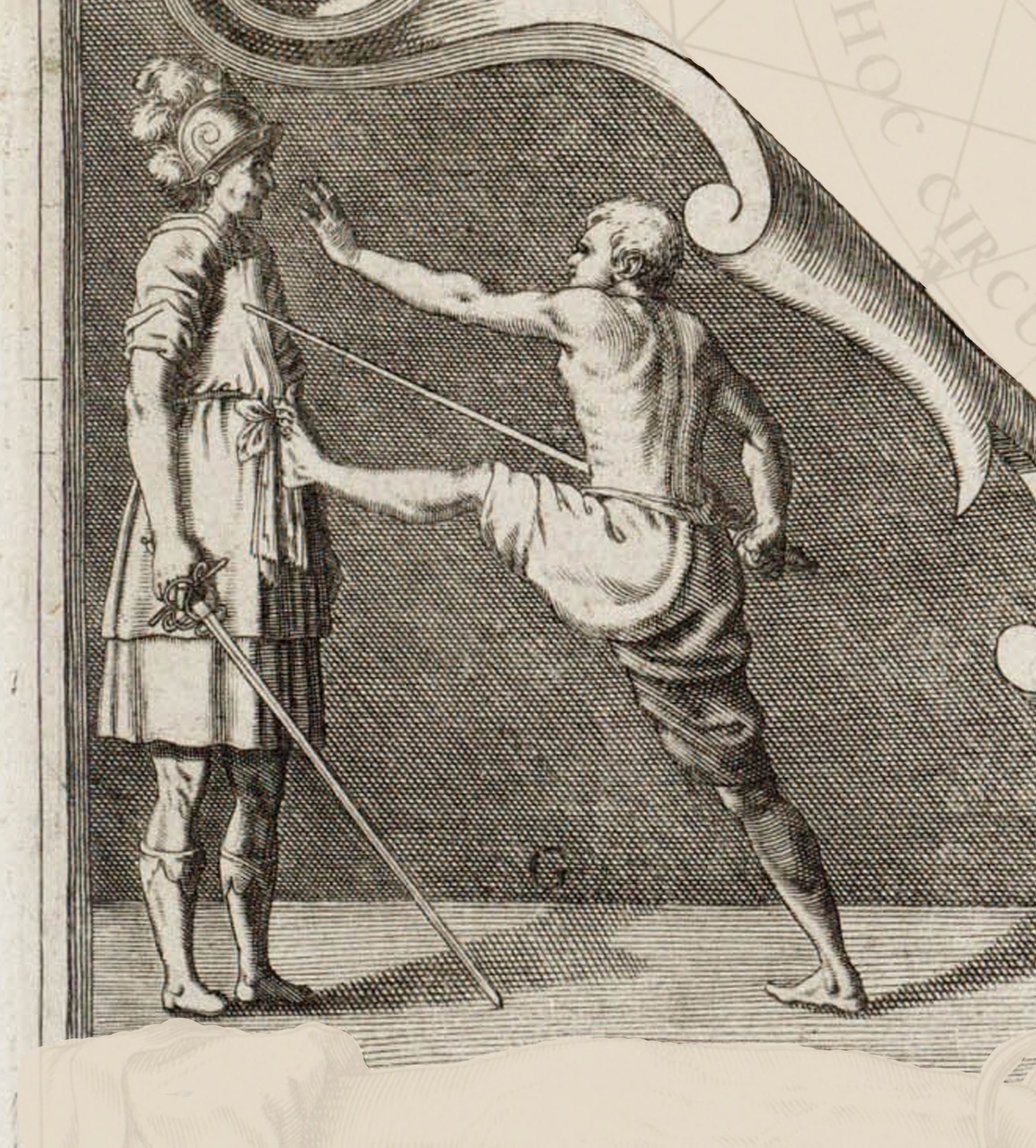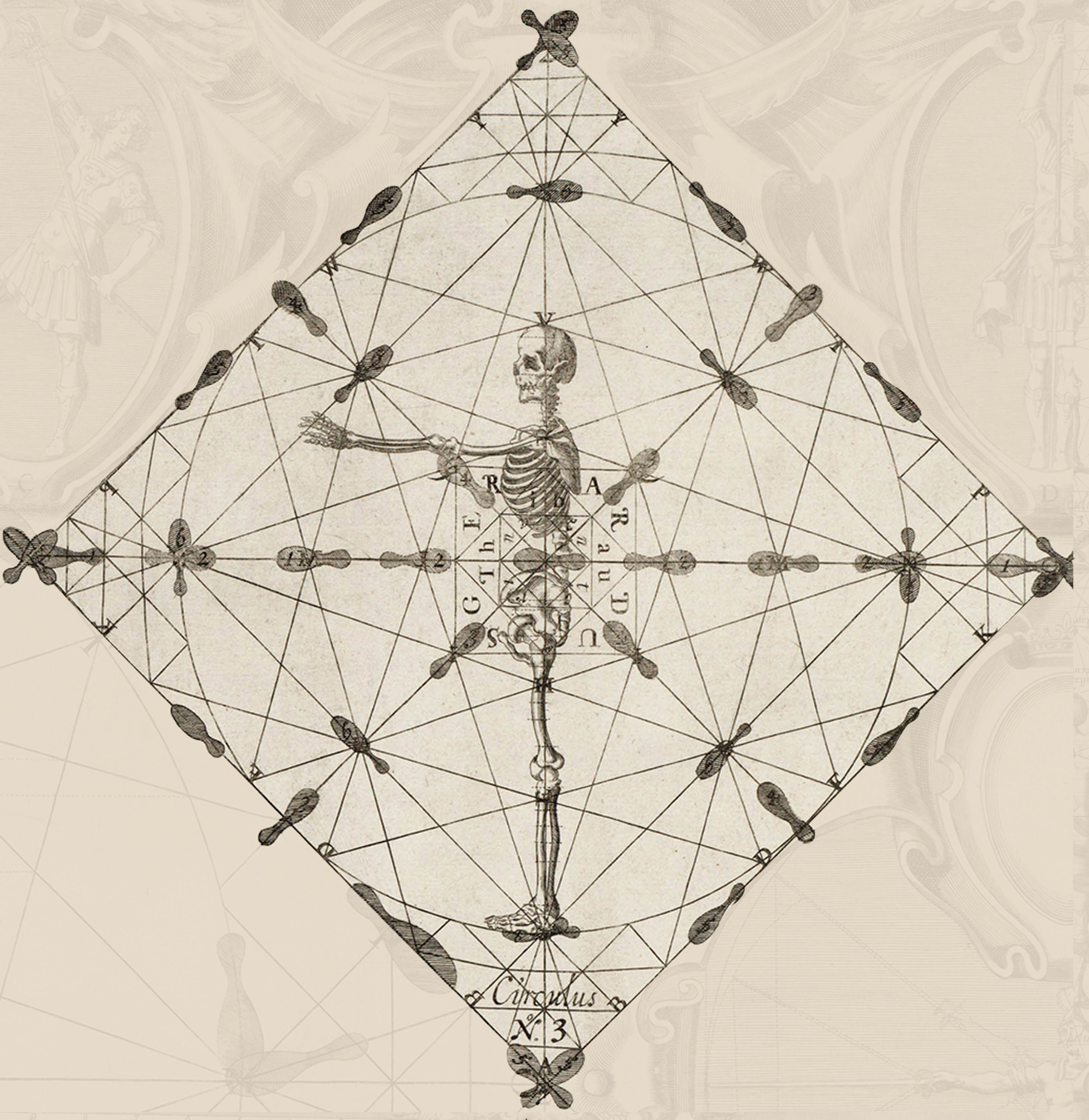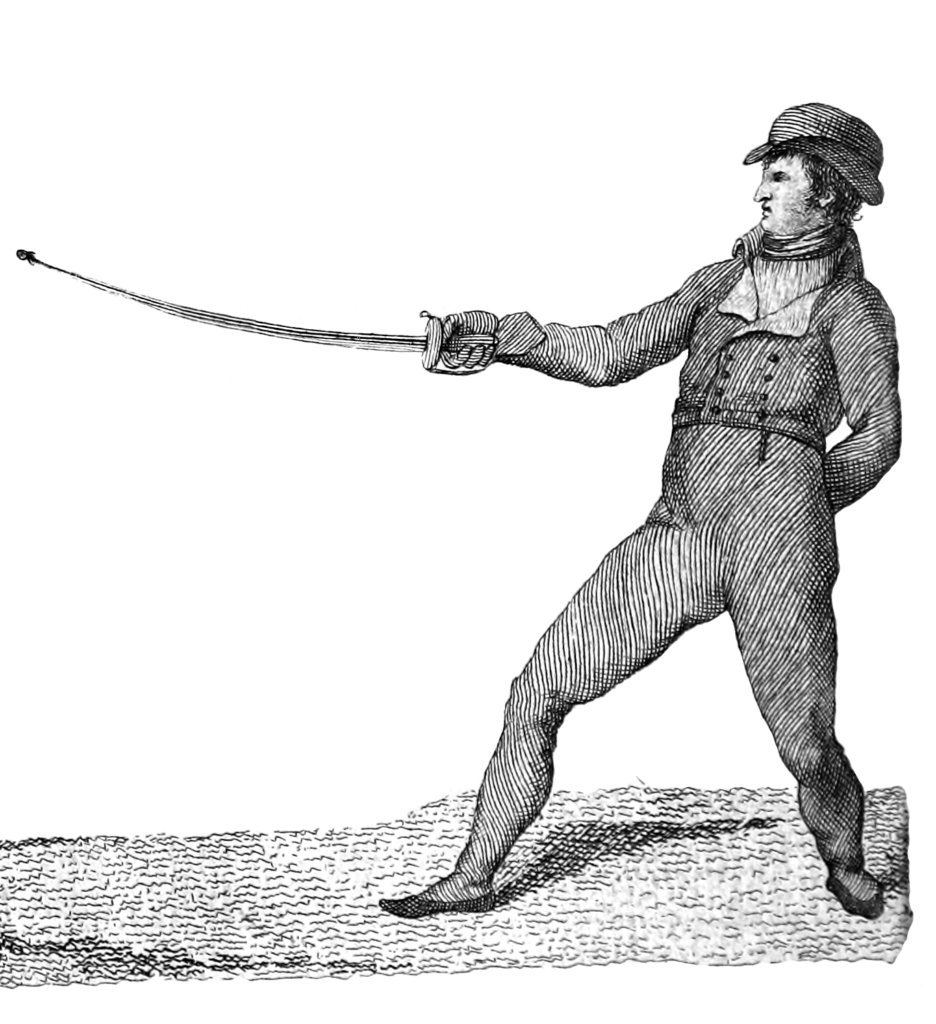175. For the intelligence of this chapter, and to avoid an annoying repetition, it should be born in mind that the opponent was fixed in the guard of sixth, he has been thrown, by virtue of his position, a deep thrust of second with a movement of square. and that he has repaired it with the removal of fifth. Note this for all of the shots in this chapter. I will begin to attack the points uncovered in his removal.
Thrust of First on the Parry of Fifth and its Removal
176. The thrust of first on the removal of fifth cannot be thrown well if it is not balanced back enough so that, without bending the arm it can, with only a short movement of the wrist, free the point above the guard of the enemy and so remove, at the same time, the measure that it has to offend by virtue of the first thrust that was thrown while you were free, with only an extension of your arm, directing the point to the chest. The operation of freeing being already assumed, turn the hand fully into fourth position, move profile, return to a forward balance, and oppose on the inside and to the height of the middle of the contrary blade. Direct your thrust, recovering with the utmost promptness.
177. The parry of first is the most secure and prompt that can be opposed to this wound. The points that are uncovered in this parry are noted in paragraph 99.
Vertical or Diagonal Cut on the Guard of Fifth and its Removal
178. Bearing in mind that the thrust that was thrown must be repaired with fifth, the head is uncovered and, in this case, the one that attacks will pass the sabre above the arm of the enemy to execute a vertical or diagonal cut to it. Note that this does not omit the opposition of the guard when executing the diagonal nor the motion of profile, and a prompt replacement of the vertical.
179. Take these wounds off with high third (§ 131), or with the first to the head, whose formation is as follows. From the parry of fifth, bend the arm, raising it at the same time so that the guard is higher than the supreme plane, remaining on the right vertical and not very far in front of the body, so that the strongest part of the blade covers the entire head and the point inclines toward the enemy, coming to turn away from your own left vertical about two thirds, staying at the height of the median plane or even higher. In this removal, which is a variation of first, are uncovered the points stated in paragraph 99, and in high third, those indicated in 147.
Diagonal Cut to the Side on the Parry of Fifth, and its Removal
180. Suppose that the enemy has repaired the thrust of second with the stated removal. Free in a moment the point of the sabre above the contrary’s arm, bending your own a little and accompanying this action with a short balance back, movement of profile, and rotation of the hand to the position of half fourth, to form a diagonal cut. This done, extend the arm and balance forward, executing the said cut to the left side, with promptness.
181. Remove this cut with the parry of first, taking care to grasp the sabre vigorously, lest the force of the blow make the removal yield. The points that are uncovered in this parry are listed in paragraph 99.
























